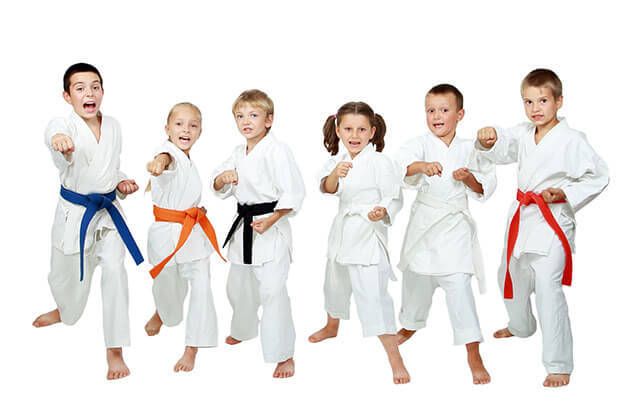Grading Dates 2024
All gradings up to 4th Kyu will take place in the larger club settings on their training nights. The grading and training times will stay the same and will accommodate students that wish to train and those that wish to grade. Students can grade at any venue that suits them, only one grading per quarter cycle. All students need to ensure that they are at the club on time.
Students can grade at the following clubs with the club venues and times as follows:
Bedford Putnoe : Wednesdays’ 19th March, 11th June, 24th September, 3rd December
6.30 - 7.30pm, Putnoe Heights Church & Community Centre, Putnoe Heights, Bedford. MK41 8EB.
Bedford Brickhill: Fridays’ 21st March, 13th June, 26th September,5th December
6.00-7.00pm Calder Rise, Bedford MK41 7UY
Shefford: Mondays’ 17th March, 9th June, 22nd September, 1st December
6.30 - 7.30pm, Methodist Church Hall, Ampthill Road, Shefford, Beds, SG17 5BE
Hitchin: Thursdays’ 20th March, 12th June, 25th September, 4th December
6.30 - 7.30pm, Walsworth Community Centre, 88 Woolgrove Road, Hitchin, SG4 0AU
All grading above 10th Kyu must have a current A.T.S.K. membership and an Association badge.
Please ensure that the times and venue are correct by speaking direct to the individual club contact, in case of any changes at club level.
BROWN BELT EXAMS:
Bedford: Fridays’ 25th April & 17th October (Brickhill club)
All Brown Belt Grading applicants must register 3 months before the grading
BLACK BELT EXAM:
23rd November TBC
All
Black Belt Grading applicants must register 6 months before the grading
Grading fees as follows:
Dojo fee plus £12.00 top up for 10th Kyu – 4th Kyu
Dojo fee plus £17.00 3rd Kyu-1st Kyu
Dan Grading fees on request to the Chief Instructor.
All Dan grade applicants need to attend regular training sessions with the Chief Instructor
Grades
Grades denote the ranking of Karate-ka within A.T.S.K. The longer and harder a student studies, the higher the grade that can be achieved. In A.T.S.K. we mark a student's achievement by awarding a coloured belt, following a successful grading.
A.T.S.K. students mark their progress by the colour of the belt they wear. Starting as a White belt, each student advances through the colours as follows:
(Note - click on a Kyu grade to see the syllabus for the grade)
| Belt | Grade |
| Blue | 10th Kyu |
| Red | 9th Kyu |
| Orange | 8th Kyu |
| Orange + Yellow tags | 7th Kyu Intermediate |
| Yellow | 7th Kyu |
| Yellow + Green tags | 6th Kyu Intermediate |
| Green | 6th Kyu |
| Green + Purple tags | 5th Kyu Intermediate |
| Purple | 5th Kyu |
| Purple + White tags | 4th Kyu Intermediate |
| Purple with a White stripe | 4th Kyu |
| Purple with a White stripe + Brown tags | 3rd Kyu Intermediate |
| Brown | 3rd Kyu |
| Brown + White tags | 2nd Kyu Intermediate |
| Brown with a White stripe | 2nd Kyu |
| Brown with a White stripe + Red tags | 1st Kyu Intermediate |
| Brown with a Red stripe | 1st Kyu |
| Finally, for those that make it, the coveted Black belt | Shodan |
Students should be proud of the grade they hold, for the belts are not simply given away. At the same time, students must understand that simply because they hold the belt of a high grade (3rd Kyu and above), this does not make them superior to those with a lower grade belt. It is simply an indication that they have been studying the art for a little longer. High grades should help and assist the lower grades whenever they can - after all, were they not helped themselves by high-grades, when they were just beginners?
Purpose of Gradings
Belts are awarded at gradings, these are held several times a year. In general it takes roughly three months to move from one belt to the next, up until Brown belt. Brown (3rd Kyu) to Brown & White (2nd Kyu) takes six months, and a further six months must go by before they can achieve Brown & Red (1st Kyu). A full year must pass before a student becomes eligible to grade for the Black belt. However, it is very important to understand three things:
- The time between gradings is a minimum - many students take longer to prepare.
- No student is expected to grade every time - students progress no faster than they feel is comfortable.
- No student should expect to grade every time - grading is at the discretion of the Sensei, who will assess a students readiness.
The student will only be entered into the grading exam if their instructor feels that they are at a good enough standard to pass the grading, although passing cannot be guaranteed.
What Happens?
So, what happens at a grading?
First of all you find yourself in a large room, quite often in a school, or a leisure centre, with scores of other students from clubs all over the ATSK region. After registering, all students gather for a quick warm-up, usually taken by one of the senior Kyu grades. Next you split up into grades (all blue-belts together, for example), and receive an hour's personal instruction from a black-belt instructor. Then there's a short recess, and the grading itself begins.
Basically, you are asked to demonstrate skills, in front of a panel of judges, in three areas:
- Basics
- Kumite
- Kata
Basics
is just that. Remember all the punching and blocking you've done, up and down the Dojo floor, over and over again? That's all there is to it. You will be asked to perform different techniques (for example, downward block, stepping punch, upper-rising block) a number of times in front of the judges.
Kumite
is where you show your ability to perform formal attacks and defences against an opponent. Once again, you've done this many times in the Dojo, paired up with a partner.
Kata.
Here you demonstrate the Kata (or Form) you've been practicing. For your very first grading this is the first 8 moves of Taikyoku Shodan.
And that's all there is to it! Afterwards, you are presented with certificates of achievement from a senior grade, and then it's time to relax and enjoy the feeling you get from having completed an ATSK grading.
Don't Be Nervous!
No student EVER fails a grading for not being able to complete a certain technique, or for being nervous, or tripping of their feet during a Kata. The main ingredient to a successful grading is always going to be SPIRIT. The student who finds it desperately hard to perform a turn in Taikyoku Shodan, for instance, but who tries hard all the time, and does their best, will have a good grading - even if they get it wrong on the day. Effort
is the watchword here, and a loud "KIAI!" will win over a judge every time!
ATSK Grading Syllabus
Click on the below grades to find out more details about each rank:

